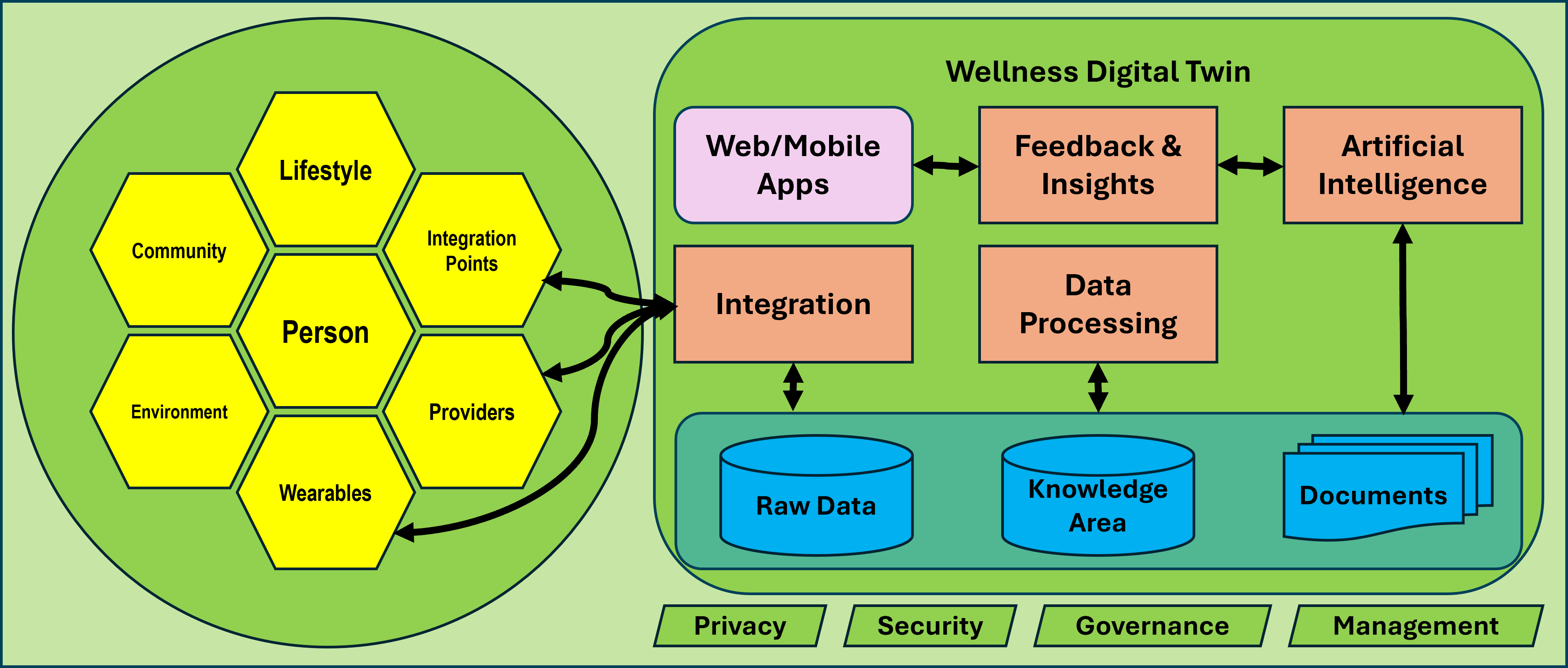Vision and Purpose
The Wellness Digital Twin represents a revolutionary platform that leverages advanced AI to deliver personalized, scientifically-validated recommendations across all wellness domains, enabling individuals to make informed decisions about their holistic wellbeing.
Architectural Foundation
- Multi-Agent System: Specialized agents collaborate across five fundamental wellness pillars: physical, mental, nutrition, sleep, and social wellness.
- Hexagonal Structure: The individual is placed at the center, surrounded by interconnected wellness domains and contextual integrations.
- Comprehensive Integration: Connects with community, environment, healthcare providers, wearable technology, and lifestyle factors.
User Interface Layer
Multi-modal interfaces enabling seamless interaction through web/mobile applications, voice assistants, and wearable devices for both passive data collection and active engagement.
Agent Coordination Layer
Central orchestration mechanism that dynamically routes user inputs, manages recommendation conflicts, and synthesizes cohesive guidance.
Knowledge & Integration Layer
Connects domain-specific expertise with scientific evidence, community insights, and individual data to formulate evidence-based recommendations.
Behavioral Change Framework
Implements proven behavioral science principles to facilitate sustainable habit formation, utilizing stage-based models, motivation assessment, and targeted nudges.
Key Innovations
- Digital Twin Simulation: Creates a living model that can simulate intervention responses before recommendation, enabling personalized effectiveness prediction.
- Agent Collaboration: Enables specialized wellness domain expertise while ensuring holistic integration through sophisticated coordination mechanisms.
- Continuous Learning: Implements feedback loops to refine recommendations based on individual outcomes, community trends, and emerging scientific research.
- Contextual Awareness: Incorporates environmental, social, and situational factors for highly relevant recommendations.
Implementation Approach
- Foundation Phase: Establish core wellness tracking, basic agent coordination, and essential user interfaces.
- Enhancement Phase: Integrate advanced behavioral change frameworks, expand agent specialization, and implement sophisticated analytics.
- Optimization Phase: Deploy predictive modeling, federated learning capabilities, and expanded ecosystem integration.
Ethical Considerations
- Privacy Protection: Embeds strict privacy controls and informed consent mechanisms.
- User Autonomy: Ensures alignment with individual values and regulatory requirements.
- Transparent Decision-Making: Provides clear, explainable recommendations and interventions.
